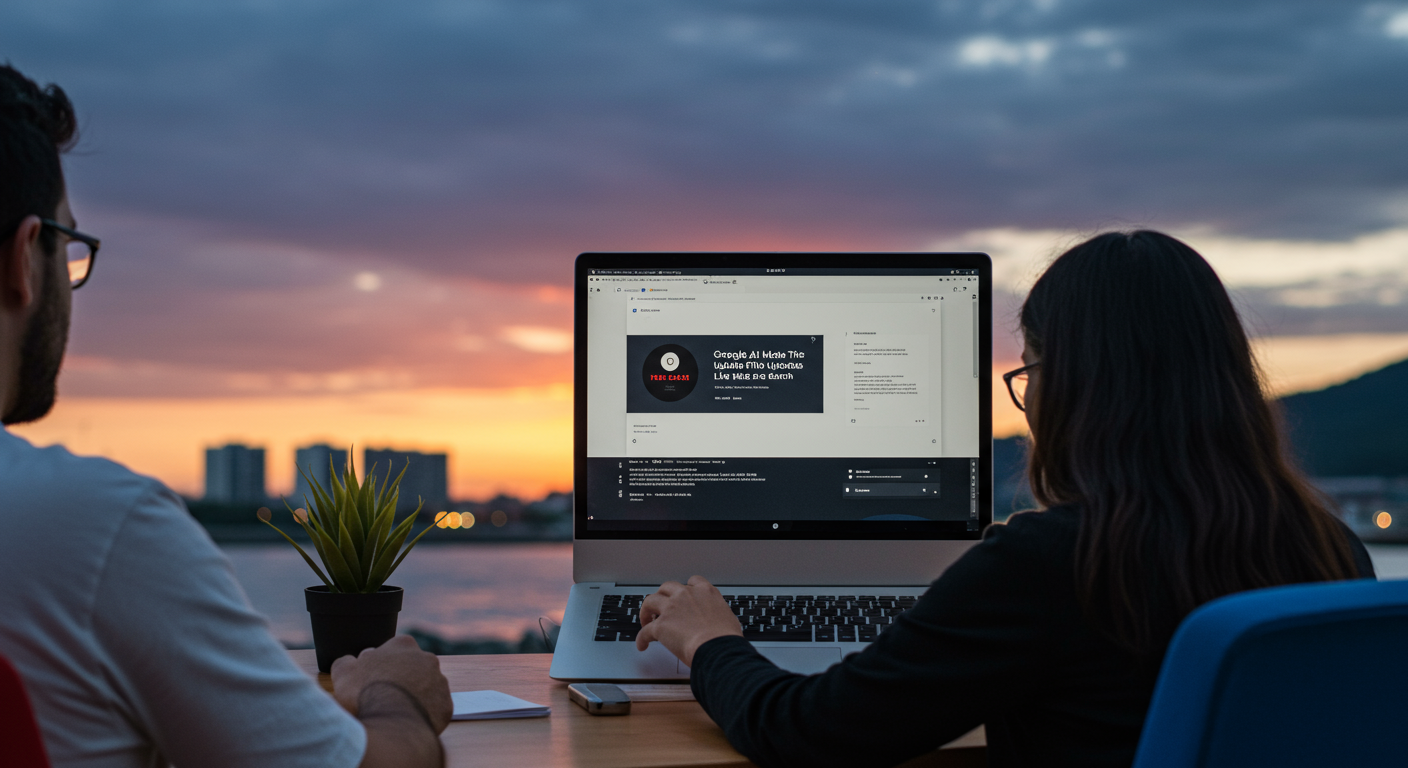Ever felt like your search engine just “gets” you? Like it knows exactly what you’re looking for, even when you’re not quite sure how to phrase it? What if searching wasn’t just about typing words, but about showing, pointing, and even talking? Get ready, because Google is transforming the way we interact with information, bringing us closer to a truly intuitive and human-like search experience thanks to incredible advancements in AI.
Gone are the days when search was just a simple text box. Google is pushing the boundaries, making search smarter, more visual, and incredibly personalized. The latest updates to Google’s AI-powered “AI Mode” are set to change how we find answers, plan our lives, and even understand the world around us. Let’s dive into these exciting new features that are making search feel less like a tool and more like a helpful companion.
Beyond Text: Uploading Files and Images to Search
Imagine you have a long PDF document, perhaps a complex research paper or a detailed instruction manual. Ever wished you could just ask Google to summarize it for you or find a specific piece of information within it without endless scrolling? Now you can! Google’s AI Mode is evolving to understand not just your text queries but also the content of files you upload.
This means you’ll soon be able to upload PDFs, images, and other file types directly into search. Google’s AI will then process this information, allowing you to ask questions about it, extract key details, or even generate summaries. Think of the possibilities: quickly grasping the main points of a dense report, finding a specific detail in a recipe image, or understanding a diagram you snapped with your phone. It’s like having a super-smart assistant who can read and analyze documents and visuals instantly.
Search with Your Camera: The Power of Live Video
We’ve all used Google Lens to identify objects in pictures. But what if you could do that in real-time, with a live video feed? Google is taking its visual search capabilities to a whole new level by integrating live video search into AI Mode. This means you can point your phone’s camera at something – a broken appliance, a plant you don’t recognize, or even a tricky knot – and ask Google questions about it.
The AI will process the live video feed, understand what it’s seeing, and provide instant information or solutions. For instance, you could show Google a blinking light on your dishwasher and ask, “What does this mean?” Or point at a tricky part of an engine and ask, “How do I fix this?” This truly interactive way of searching bridges the gap between the digital and physical worlds, making information access incredibly immediate and practical.
Your AI Assistant: Enhanced Planning and Personalization
Search is no longer just about answering a single question; it’s about helping you accomplish multi-step tasks and plan complex activities. Google’s AI Mode is becoming a much more capable personal assistant, designed to remember context from your previous interactions and provide highly personalized and detailed responses.
Imagine you’re planning a trip. Instead of performing dozens of separate searches for flights, hotels, activities, and restaurants, you can tell Google, “I want to plan a family trip to Rome for next summer.” The AI will then understand the broader context and help you with each step, suggesting itineraries, recommending family-friendly places, and even keeping track of your preferences as you refine your plans. It’s like having a dedicated planner that learns from you and helps you achieve your goals more efficiently.
This enhanced planning capability extends beyond travel. You could ask for a meal plan for a specific diet, get help organizing a move, or even brainstorm ideas for a home renovation project. The AI’s ability to maintain a conversation and remember what you’ve discussed makes these interactions feel incredibly natural and productive, tailoring information specifically to your needs and preferences.
AI Overviews: Getting Answers Faster (and Smarter)
While the focus is on the new interactive features, it’s worth noting the continued evolution of AI Overviews. These concise, AI-generated summaries at the top of your search results page aim to give you quick answers without needing to click through multiple links. They synthesize information from across the web, providing a snapshot of the most relevant details.
While still being refined, AI Overviews represent Google’s commitment to delivering information more directly and efficiently. They are designed to save you time by offering an immediate grasp of complex topics or simple facts, acting as a handy shortcut to knowledge.
Making AI Accessible: Live Captions and Beyond
Google is also prioritizing accessibility, ensuring these powerful AI tools are available to everyone. One notable improvement is the ability to generate live captions for phone and video calls directly on your device, even without an internet connection. This feature, powered by on-device AI, provides real-time text transcription, making communication more accessible for individuals with hearing impairments or those in noisy environments.
This push for accessibility underscores Google’s broader vision: to make AI a helpful and inclusive tool for daily life, breaking down barriers and empowering more people to connect and access information effortlessly.
AI on Your Device: Gemini Nano and Future Possibilities (Project Astra)
A significant part of these advancements comes from Google’s commitment to running powerful AI models directly on your device, like with Gemini Nano on Pixel phones. This “on-device AI” allows for features like sophisticated live captions and improved assistant capabilities without needing to send all your data to the cloud, boosting speed, privacy, and reliability.
Looking further into the future, Google shared a glimpse of “Project Astra” – their vision for a truly universal AI agent. Imagine an AI that can not only understand text, images, and video, but also remember what it sees and hears, reason about the world in real-time, and even speak naturally. Project Astra aims to create AI assistants that are truly multimodal, moving seamlessly between different types of information and interacting with us in incredibly human-like ways. This is the ultimate goal: an AI that feels like a natural extension of your own understanding, ready to assist you in any way imaginable.
The Big Picture: A Multimodal Future for Search
What do all these updates mean for you? In essence, Google is moving towards a “multimodal” future for search. This isn’t just a fancy tech term; it means that search is no longer confined to just text. It now understands and processes information from multiple “modes” – text, images, video, and even live interaction.
This shift makes search incredibly more powerful and intuitive. Instead of trying to translate your real-world problems into keywords, you can now simply show, speak, or upload. It brings us closer to a search experience that mirrors how we naturally think and interact with the world around us. These advancements promise to make finding information, solving problems, and planning our lives significantly easier and more effective.
Google’s latest AI updates are more than just new features; they represent a fundamental change in how we will interact with digital information. By embracing file uploads, live video, enhanced planning, and sophisticated on-device AI, Google is paving the way for a search experience that is deeply humanized, incredibly intelligent, and ready to meet the diverse needs of our modern lives. The future of search is here, and it’s smarter, more helpful, and more visually engaging than ever before.









